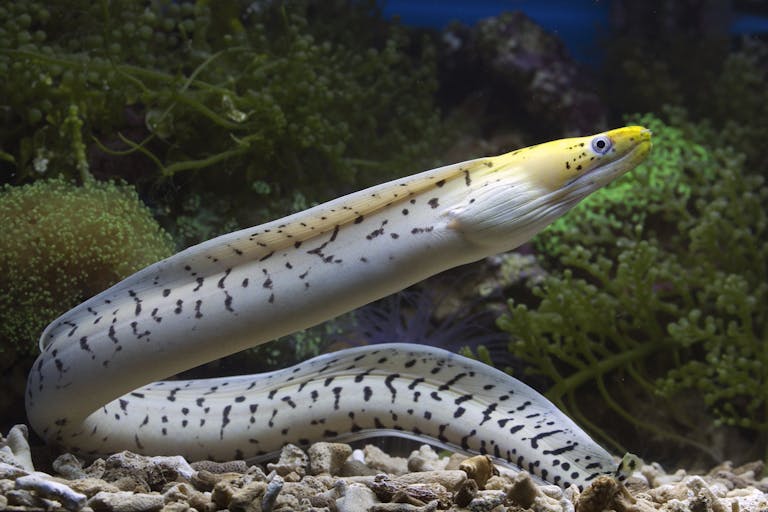Scientists Keep a Mammalian Cochlea Alive Outside the Body for the First Time

For the very first time, researchers have managed to keep a piece of the mammalian cochlea alive and functioning outside the body. This breakthrough, led by the late A. James Hudspeth and his team at Rockefeller University, allows scientists to directly observe the mechanics of hearing in ways that were previously impossible.
It is a major milestone in auditory science, offering insights into the fundamental principles of hearing, and potentially opening the door to future treatments for hearing loss.
What Exactly Happened
The achievement centers around sustaining a tiny slice of cochlear tissue ex vivo — outside the living body. The cochlea is a spiral-shaped organ buried deep within the densest bone of the skull, making it notoriously hard to study. Hudspeth’s group managed to remove a sliver less than 0.5 millimeters from the cochlea of Mongolian gerbils, a species whose hearing range overlaps with humans.
These tissue samples were taken at a very specific developmental stage: when the gerbil’s hearing was already mature but the cochlea had not yet fully fused into the temporal bone. This delicate timing allowed the researchers to extract the tissue while keeping it viable.
Once excised, the samples were placed inside a custom-designed chamber that recreated the cochlea’s natural environment. The tissue was continuously bathed in the two fluids that normally surround it — endolymph and perilymph — and kept at the same temperature and voltage it would experience inside the body. The precision of this chamber was essential to maintaining the electrochemical balance needed for the cochlea to stay alive and functional.
The chamber itself was the result of careful engineering, with contributions from Brian Fabella (a research specialist in the Hudspeth lab) and Nicholas Belenko (an instrumentation engineer from Rockefeller’s Gruss Lipper Precision Instrumentation Technologies Resource Center). This setup allowed scientists to play sound stimuli to the tissue using a miniature speaker and then record the cochlea’s responses in real time.
What They Observed
The experiments revealed the fine-tuned mechanics of hearing at an unprecedented level of detail:
- The hair cells within the cochlea responded to sound vibrations by opening and closing ion channels in their hair-like projections known as stereocilia. This process added energy to the incoming sound waves, amplifying them beyond their original strength.
- The outer hair cells elongated and contracted in response to voltage changes — a process called electromotility — further sharpening the cochlea’s ability to detect and discriminate frequencies.
- Most importantly, the team observed that the cochlea’s active process operates at a Hopf bifurcation, a kind of critical point between silence and oscillation. This concept had been well documented in non-mammalian systems like bullfrogs but had never been directly proven in mammals until now.
The finding confirmed that mammalian hearing shares a unifying biophysical principle with hearing in other species. This principle helps explain how the cochlea can detect incredibly faint sounds and still process an enormous range of sound levels with precision.
Why This Matters
Understanding the cochlea’s mechanics has long been one of the toughest challenges in sensory biology. The organ’s fragility and its location deep inside the temporal bone have kept researchers from directly watching it in action. Now, for the first time, they can study it live and in real time, with complete experimental control.
The significance goes beyond curiosity. Most hearing loss occurs because of damage to the cochlea’s hair cells, and currently there is no approved drug to restore hearing after this damage. One of the reasons progress has been slow is that scientists lacked a precise mechanistic understanding of the cochlear amplifier.
With this new ex vivo system, researchers can now perform targeted pharmacological experiments on cochlear tissue, tweaking specific cells or interactions to see how the system changes. This could eventually point to ways of preventing or even repairing hearing damage before it becomes irreversible.
The Role of A. James Hudspeth
This achievement was the final breakthrough of A. James Hudspeth, a pioneering figure in auditory neuroscience, who passed away in August 2025. Over his fifty-year career, Hudspeth contributed extensively to our understanding of how hair cells convert mechanical vibrations into the electrical signals that we perceive as sound.
Back in the late 1990s, Hudspeth, together with physicist Marcelo Magnasco, demonstrated the role of Hopf bifurcation in the hearing of bullfrogs. For decades afterward, whether this principle also applied to mammalian hearing remained an open question. This new study provides the long-sought evidence, bringing closure to one of the most debated issues in auditory biophysics.
Colleagues have described this work as nothing less than a masterpiece, calling it one of the most impressive experiments in biophysics in recent years.
Extra Background: How the Cochlea Works
To fully appreciate the breakthrough, it helps to understand what makes the cochlea so extraordinary.
The cochlea contains around 16,000 hair cells, each topped with bundles of stereocilia. These tiny “hairs” bend in response to sound-induced fluid waves, converting mechanical motion into electrical activity. Each hair cell is tuned to a specific frequency, creating a tonotopic map across the spiral of the cochlea — with high frequencies detected at the base and low frequencies at the apex.
The cochlea also exhibits compressive nonlinearity, meaning it can handle very quiet and very loud sounds without becoming saturated. This is why we can whisper and shout within the same ear without overwhelming it. The process is driven by the active feedback of outer hair cells, which don’t just passively receive vibrations but actually amplify them.
In simple terms, the cochlea is not just a microphone; it is an active processor that sharpens, amplifies, and dynamically adjusts sound input before sending signals to the brain.
Extra Background: Hopf Bifurcation
The idea of a Hopf bifurcation may sound abstract, but it is a concept from dynamical systems that describes how a system at the edge of instability can become exquisitely sensitive to small perturbations.
Imagine balancing a pencil perfectly upright. It will eventually tip over, but at that critical point it is so sensitive that even the tiniest breath of air can set it in motion. Similarly, the cochlea sits at a critical tipping point between silence and oscillation. When even a faint sound arrives, the system reacts dramatically, amplifying that tiny input into something the brain can perceive.
In non-mammalian species such as insects and amphibians, this principle was already clear. But proving it in mammals was extremely difficult because the cochlea is so hard to access. Hudspeth’s team has now confirmed it directly.
Future Directions
With the ex vivo preparation, researchers now have a powerful new tool for exploring the cochlea:
- They can manipulate the system pharmacologically, for example, by blocking specific ion channels or altering electromotility, and see exactly what happens.
- They can study how the system fails in cases of hearing loss, potentially identifying early signs before the damage becomes permanent.
- They can test hypotheses about the role of criticality in hearing, bridging the gap between biology and physics.
While there is still a long road from laboratory experiments to therapies, this advance represents the clearest path yet to understanding and eventually addressing hearing disorders.
A Note on Limitations
It’s important to acknowledge what this research does not do. The system works on tiny fragments of cochlea, not the entire organ, so large-scale interactions such as traveling waves along the full cochlea are not replicated. Also, while the chamber recreates much of the cochlear environment, it cannot perfectly mimic the complexity of blood supply, immune responses, or long-term viability inside the body.
Even so, the achievement marks a quantum leap in hearing science. It takes the field from indirect inference to direct observation of living mammalian cochlear mechanics.
The Bottom Line
This work provides experimental proof that the mammalian cochlea operates using the same critical dynamics seen across the animal kingdom. It validates decades of theory, honors the life’s work of a pioneering scientist, and sets the stage for breakthroughs in hearing restoration.
For anyone interested in how we hear — and why we sometimes lose that ability — this is one of the most exciting scientific stories of recent years.





